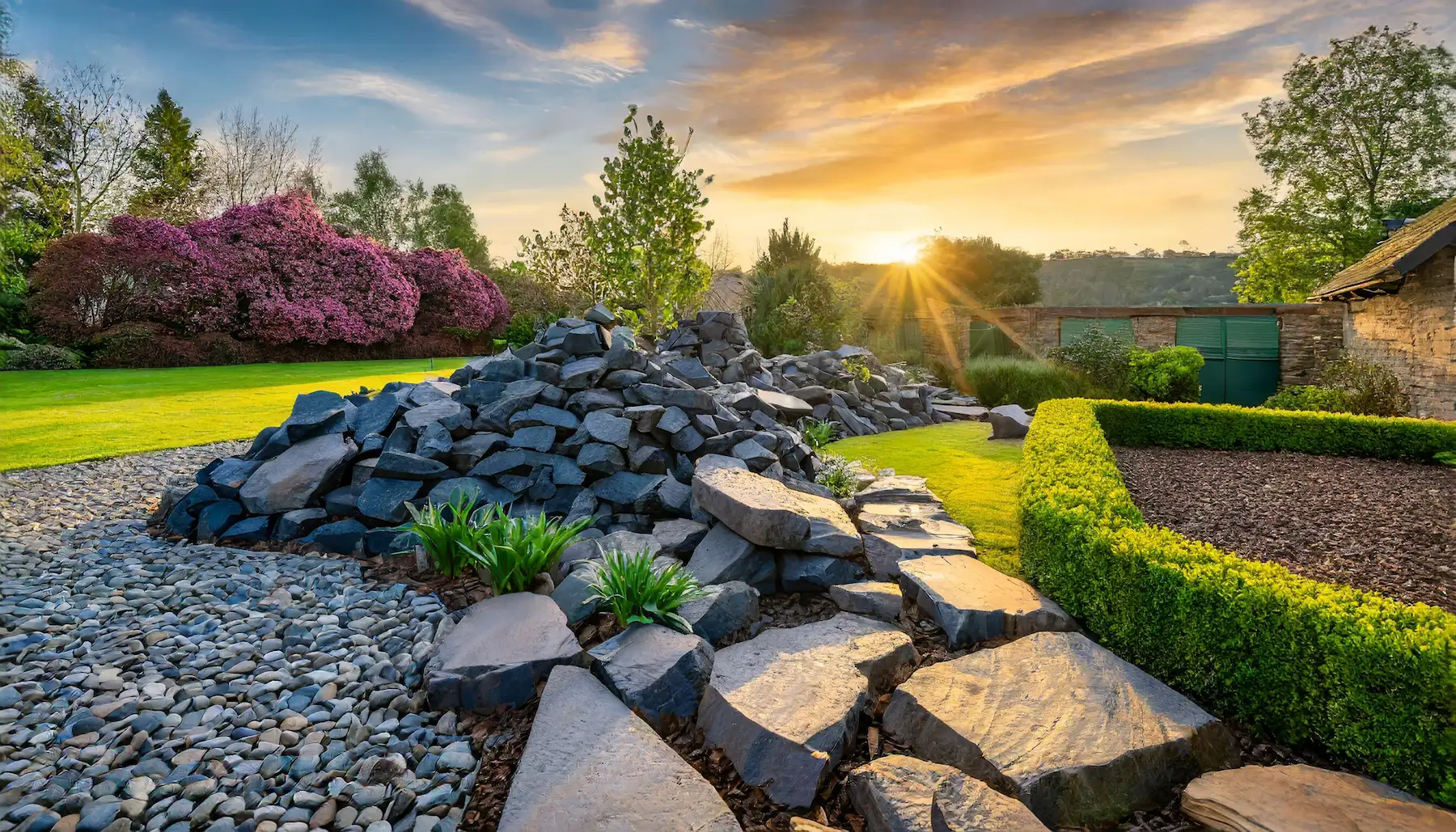Welcome to the start of your landscaping adventure! If you’ve always dreamed of turning your outdoor space into a personal paradise but didn’t know where to begin, you’ve come to the right place. Think of this as your step-by-step guide, complete with tips, tricks, and everything you need to know to get started. Whether your goal is a lush garden, a cozy patio, or a combination of both, we’ll break it down so you feel confident and ready to dig in (pun intended).
1. Assessing Your Space
Before picking up a shovel or browsing garden centers, take a moment to really look at the space you’re working with. Here’s how you can do it like a pro:
Check Your Soil Type
Did you know soil plays a big role in how well your plants grow? Some types, like clay, hold too much water, while sandy soil lets it all just drain away. To figure out what you’re working with, grab a handful of dirt and squish it. Does it stick together in a ball when wet? You’ve got clay. Does it fall apart easily? That’s sandy soil. Somewhere in between? Lucky you, that’s loam!
Still unsure? Most gardening stores sell simple soil test kits for just a few bucks. Testing helps you decide if your soil needs a little love, like adding compost, to make it richer for plants.
Understand Your Yard’s Personality
Just like people, every yard has its quirks. Observe where the sun shines the longest, which areas stay shady, and any spots where water tends to puddle after it rains. Plants need different levels of sunlight and water, so knowing your yard’s “personality” helps you choose the right ones.
Make note of any slopes or uneven patches too. You’ll likely need to fix those when we talk about grading and leveling later.
Map It All Out
Now that you know your yard better, grab some paper (or an easy-to-use garden design app) and sketch the basics. Draw in trees, patios, and anything you want to keep. Label sunny spots, shady corners, and wet areas. This simple map will guide you as you plan your dream landscape.
2. Setting a Budget and Timeline
Okay, deep breath. It’s time we talk about money. The truth? Landscaping doesn’t have to cost an arm and a leg. Here’s how to budget without stress:
Decide Where to Splurge
Are you dying for a stone walkway or an epic water fountain? Pick one or two “wow” features to invest in. Then, balance those with budget-friendly plants and DIY projects.
DIY or Hire a Pro?
Not everything needs a professional (yay, savings!). If you’re confident about tasks like planting trees, go for it! But for tricky things like installing retaining walls or landscape lighting wiring, hiring someone ensures it’s done right and safely.
Set Realistic Goals
Rome wasn’t built in a day, and your backyard won’t be either. Start with one project, like a patio or flower bed, and build over time. Create a timeline that fits your budget and lets you enjoy the process, not rush through it.
3. Creating a Landscape Vision
This is the fun part—dreaming up what your outdoor space will look like! Here’s how to make it happen:
Find Your Style
Do you love the wild charm of English gardens or the sleek look of modern landscaping? Maybe you prefer a warm Mediterranean vibe with drought-tolerant plants? Browse Pinterest, garden blogs, or take a walk in your neighborhood to gather inspiration.
Picture How You’ll Use the Space
Think about how you’ll enjoy your yard. Do you want a space for kids or pets to play? A cozy spot for morning coffee? A gathering area with a fire pit? Your needs will shape your design.
Get Tech Help
Designing your landscape doesn’t have to be intimidating. Apps like iScape or SketchUp let you see how different plants and features will look in your space. They’re like magic for visualizing your plan!
4. FAQs About Starting Your Landscape Installation
Q1. I don’t have a green thumb. Can I still landscape?
Absolutely! Start small with easy-care plants like lavender or ferns. Follow your soil and sun guidelines, and your plants will thrive.
Q2. How much does landscaping cost?
It depends! A basic DIY project might cost $500-$1,000, while professionally designed landscapes can go into thousands. Stick to your budget and grow your space over time if needed.
Q3. Do I really need to test my soil?
Yes, if you want healthy plants. Soil testing helps figure out what nutrients your yard might be missing, so you can fix it before planting.
Q4. What if my yard is really small or oddly shaped?
No problem! Use vertical gardening (like trellises) to create height and maximize space. Reflective surfaces like mirrors can even make small areas feel larger.
Q5. Is landscaping eco-friendly?
It absolutely can be! Incorporate native plants that require less water and use compost instead of synthetic fertilizers. Eco-friendly landscaping can save you money and help the planet.
Now Go Explore Your Outdoor Potential
Starting your landscape installation doesn’t have to feel overwhelming. With these simple steps, you’re already ahead. Keep exploring the possibilities for your dream yard, one step (and plant) at a time. Next, we’ll look at how to prepare your site for all the magic to come!

